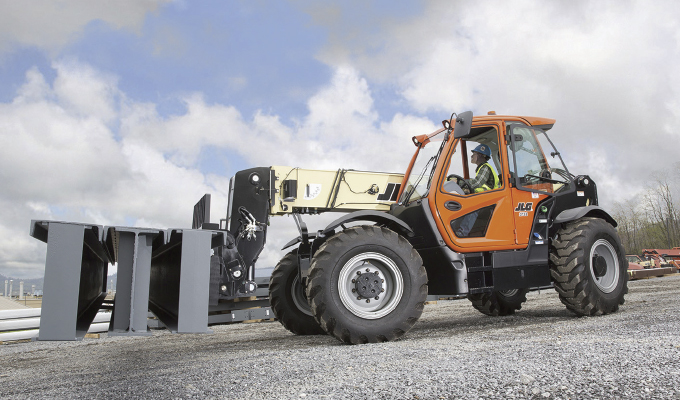Traditional telematics is a dot on a map—it is one-way data that requires someone to sit at a computer, interpret what the information is telling them, and then figure out what action users in the field need to take. It can only do so much.
That’s a big challenge.
But, telematics has the potential to do far more than only locating equipment on a map and knowing when a machine needs an oil change. Telematics’ most significant contribution is that it provides information to solve problems, such as geolocating a machine to find it, or notifying users of the machine’s health.
So, we asked ourselves, how can OEMs like JLG help with this?
The answer is to make data very intuitive, easy to use, and easy to understand so that customers can act.
That’s why when JLG launched its new IoT (Internet of Things) fleet management platform last year, it had more than 20 distinct features. And, only one was telematics. We believe its time to change the conversation about how IoT technology revolutionizes what telematics looks like on the job site.
NEW WITH IOT
With IoT, we see a world where we’ve evolved into this two-way machine interactivity that doesn’t just provide data but rather insightful, actionable information.
As an OEM, our job has been to figure out how to make the actual insights actionable for customers in the field, who interact with the equipment firsthand. We do this by thinking about problems those people need to solve with an IoT solution, immediately focusing on two things that people could touch and feel:
1) Automate manual processes, because we know that when people do things manually, there’s a margin for human error. It happens.
2) Give our customers the efficiency of time back in their days.
Let’s say, on average, if it used to take 45 minutes for a branch manager to find a JLG machine in their rental yard or for a service tech looking for the machine on the jobsite, now it takes less than one click of a button. This is the classic scenario of reducing downtime and increasing uptime but with a tangible nature.
OTHER NOTABLE FEATURES
We considered several other factors when developing our IoT solution, such as delivering a platform that genuinely solves challenges for specific types of equipment, such as specialty machines with unique problems. For example, something as simple as machines sending data about whether the ignition is on/off. Ninety percent of the time, access equipment is used in an off state. Operators get it to height, turn the machine off while doing their work, and then turn it on again to get back down.
We also focused on digitizing customers’ daily processes and looking for ways to use IoT to automate manual tasks. For example, it allows our customers to figure out how many hours an asset is in use and its current state of charge or fuel level, whether it has any active fault codes, etc. by simply touching a button or looking at a data dashboard.
One last transition we needed to figure out was moving from the physical to the digital world. How could we digitize what used to be a physical handheld piece of hardware through something like a mobile app? A great example is using a Bluetooth analyzer through the IoT application. With it, customers will no longer need to carry the handheld analyzer and cable; they now have all the same usability and functionality through their phones.
Customers need that efficiency, and they can now access it with the power of their fingertips instead of the power of their feet.
IMPORTANT CONTRIBUTIONS
With two-way IoT communications, there is a whole new level of machine interaction and integration with the assets. Equipment owners and operators using IoT mobile apps can find a machine by remotely lighting the beacon light or honking the horn. Or, when looking at data like machine status, users can light up all the machines within Bluetooth range and have them clearly identified through color, seeing immediately if any have active fault codes that need to be addressed. It’s about efficiency of time and finding an asset right away.
It’s about turning data into actionable information, using audio and visual representation principles to advance technology and machine interactivity. It’s about giving users access to insights and the ability to interact with the machine in ways they can see, feel, and touch.
It’s about empowering the people on the job site and at the branch location with a new level of data sophistication and interaction they’ve never been blessed with before. For example: I’m a fuel truck driver, and I was told to arrive at the job site and refuel the telehandler. But which one? Using IoT technology in fleet management, I can see all of the machines on-site at the touch of a button. Based on the visual color of the beacon light, the machines indicate (green—good, yellow—mid, and red—low), and I know the exact one that needs attention.
That’s the power of revolutionizing telematics as part of a comprehensive IoT offering. Its connectivity evolved.
Ara Eckel is director of product management – Connected Solutions, JLG. For more, visit www.jlg.com.


